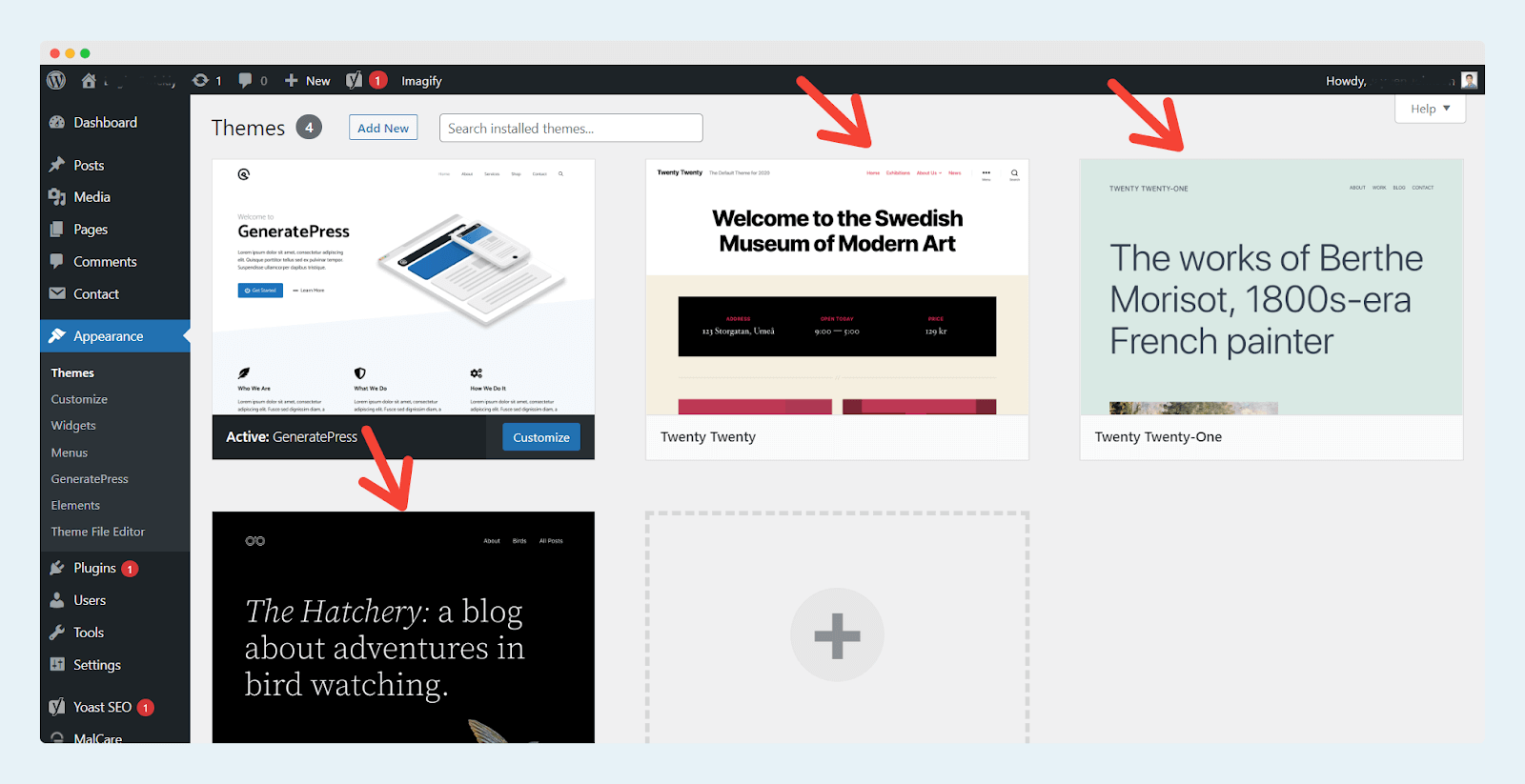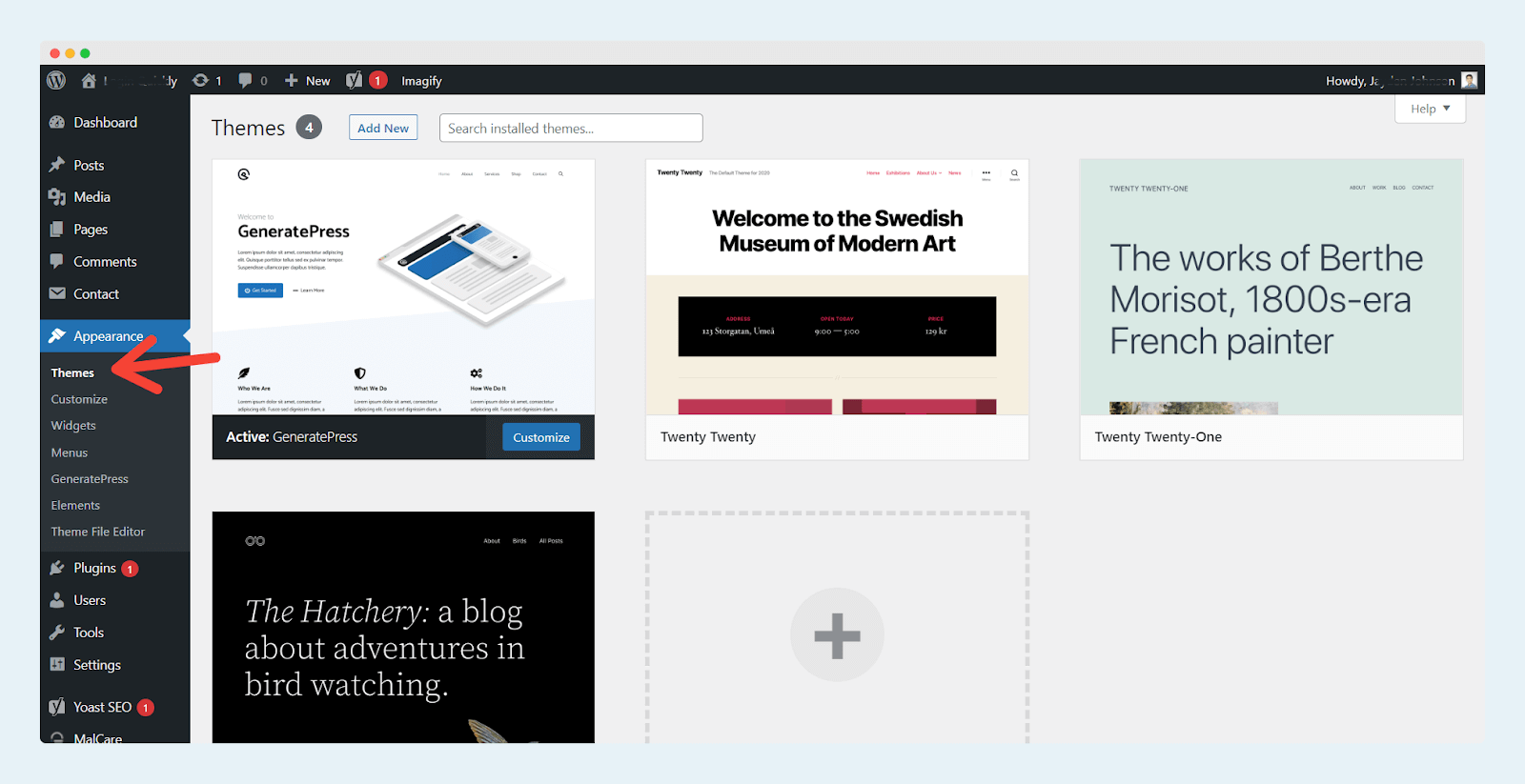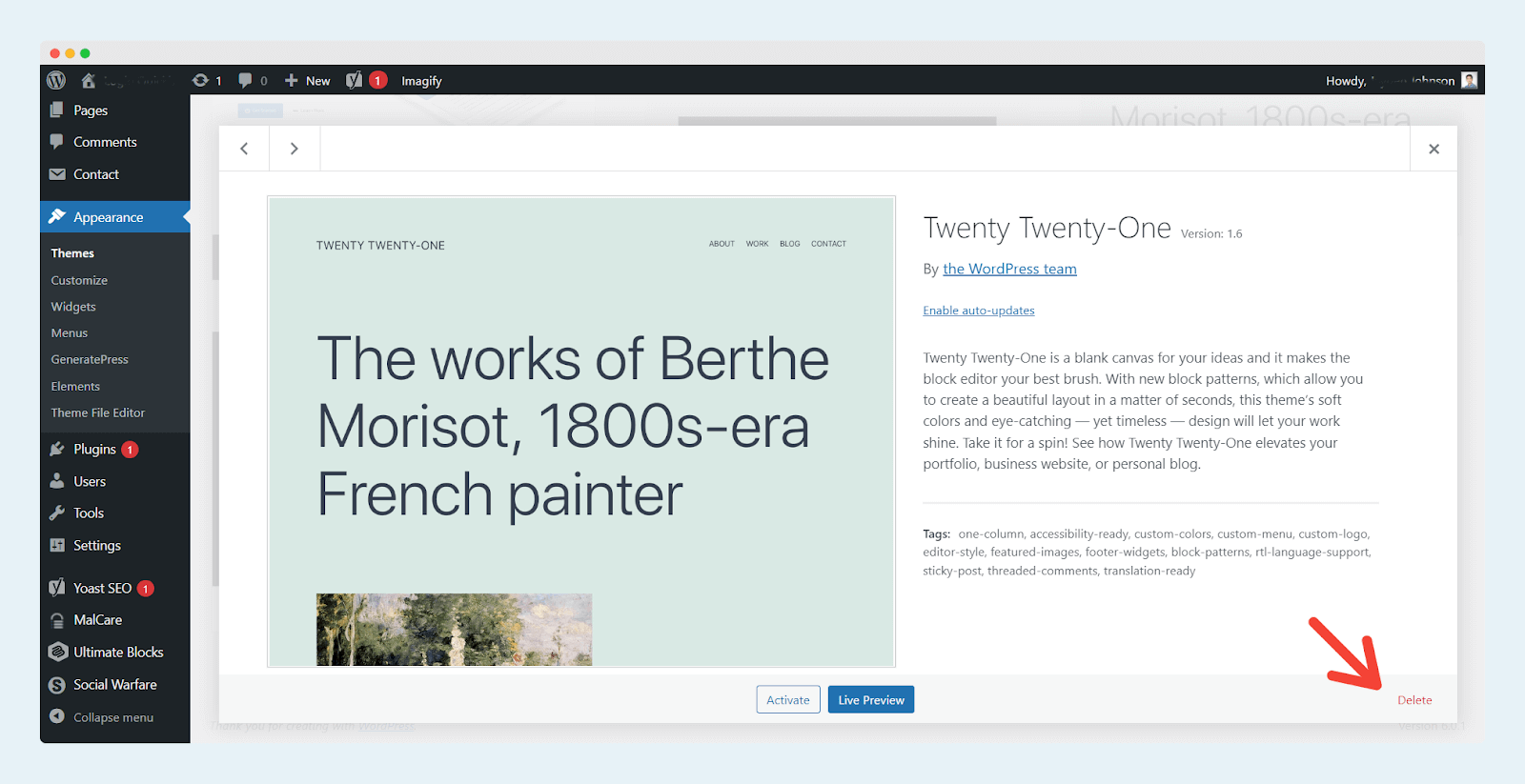Deleting a WordPress is a super easy task, but users often forget to delete the old theme when they switch to the new one, or sometimes new users do not delete the theme, thinking it will break the website interface.
Well, deleting the unused theme will not cause any error, but even by mistake, if you delete the currently active theme, it may break your site interface completely.
Few WordPress users keep the unused themes as it is, thinking there is no harm in keeping them. But it is not true; those unused themes seem harmless, but in reality, they are using your precious hosting resources, hurting your website’s health, and putting your website at risk if you’re not updating them regularly.
It is highly recommended to delete the WordPress theme if you have installed the new one (It is also important to delete unused plugins from your website to make it healthier).
Now the question arises, how can you delete the WordPress theme?
Below in this article, we have shared a few different ways to delete the theme from WordPress and things you should take care of at the time of deleting your theme.
✍️ Author’s Note:
It is not harmful to keep the one WordPress default theme unused on the website because this default theme can save the website interface from breaking if there is any problem with the currently active theme. You should keep the theme “Twenty Twenty One” on your site and update it from time to time.
Why Should You Immediately Delete an Unused WordPress Theme?

We highly recommend you delete the WordPress themes you have not used. There are several reasons why you should not keep it as it is. Here are a few reasons:
- Security risk is the main reason you should not keep unused themes on your server because they will create a backdoor for hackers if you are not updating them from time to time.
- All the WordPress themes are developed using PHP, which can be used to hide malicious code.
- Those unused themes not only use your disk space but also increase the backup size, resulting in additional use of resources.
This is why you should delete the unused WordPress theme. Mostly those unused themes create an issue only, but in some conditions, you need to keep them to maintain your website interface as it is. Deleting the primary theme can create a problem when you are using the child theme.
Should You Take the Backup Before Deleting the Theme?
Deleting a WordPress theme is not a big task; that’s why we will not recommend you to take a backup of your website before deleting a theme from WordPress. But if you have done any customization in your theme or website which you want to keep for future use, you can take the WordPress website backup when deleting the theme.

It is not hard to take a backup in WordPress. You can easily do it will the help of a free or paid plugin. We will recommend you to use Updraft to take the WordPress backup. This plugin allows you to take a backup of your entire website for free in one click. You also schedule an automatic backup to remote space.
3 Ways to Delete a WordPress Theme
You can delete the WordPress theme in a few different methods. Below we have explained 3 different ways to delete the time in a step-by-step manner:
How to Delete a WordPress Theme Using WordPress Dashboard?
First of all, log in to your WordPress website. You can go to the WordPress login page by “/wp-admin,” then enter your Username and Password and click on the Login button.
It will redirect you to the WordPress admin dashboard. Then scroll down below, and you will find the option as Appearance; when you hover over it, another option will open as Themes; click on it.

Now you will be redirected to the page where you will see all the installed themes on your WordPress website. Here, the first theme is the theme that is currently active on your website, and all the other themes are inactive.
You can delete all the inactive themes. To delete the theme, hover over the theme, and you will have the option of Theme Details. Click on it, and WordPress will show you all the details related to the theme. You will get the option of Delete at the bottom, as shown in the image.

Once you click on Delete, your WordPress installation will permanently delete the theme.
✍️ Author’s Note:
If you are facing the error saying “Deletion failed, the theme requested does not exist.” then it means that WordPress cannot delete the theme files completely. You can delete this theme completely using File Manager and FTP.
How to Delete a WordPress Theme Via FTP?
If, for some reason, you cannot delete the WordPress theme from the WordPress dashboard, then FTP is the other best and easiest-to-do option.
For those who don’t know, FTP is the File Transfer Protocol, you will get your FTP details in the email you get from your hosting provider when you purchase it, or you can also ask your hosting provider to create a new FTP account and share the details with your if you don’t have it.
You first need to download any FTP client; we recommend using FileZilla and logging into your server using FTP details. Once the FTP connection is established, you will see all your WordPress website files.
First, go to the wp-content folder, then go to the theme folder, and you will see all the themes. You can right-click and delete any theme you want from here. Just make sure that you are not deleting the currently active website theme.

This is how you can delete the theme using FTP.
How to Delete a WordPress Theme Using File Manager?
Deleting a theme using the File Manager is more straightforward than doing the same thing using FTP. Here is how you can do it.
You first need to login into your hosting control panel; then, you will get an option as File Manager; click on it. Then go to wp-content >> themes, and you will see all the available themes in this folder.
You can easily delete any theme by clicking the Delete option at the top; even when you right-click on the theme folder, you will get the option to delete the theme folder.
Is There Anything You Need to Do After Deleting the WordPress Theme?
When you delete any theme from WordPress using the Themes option in the WordPress dashboard, it will not delete all the files of the particular theme from the server. You need to check and delete those files manually.
First, log in to your cPanel and go to File Manager, then go to “/wp-content/themes/.” If you get the particular theme folder here, then delete it. You should also check the WordPress Media Library for the themes media files and delete the theme also if you find any.
Theme Widgets are also an important thing you should check. For this, go to Appearance > Widgets. Here will see all the old and new widgets. Move the old widgets to the Inactive Widgets section and then click on the option as Clear Inactive Widgets. Now, all the old theme widgets are deleted.
Now you can say you have entirely deleted unused WordPress themes from your website.
If You Delete the WordPress Theme Accidentally, then What?
Accidentally deleting the WordPress theme will not affect your website badly, but you will lose all the customization you have done. You can restore the deleted WordPress theme by installing it again from the WordPress theme library.
If you have the old backup, then you can also restore it. In this way, you will get back all your customization. Backup restoration can also be done in one click as WordPress plugins provide this convenience.
You can delete the WordPress theme quickly by using any of the above-featured ways. We hope in this comprehensive tutorial, and you get what you are looking for.

